Most tumors have abnormally activated lipid metabolism capabilities that enable them to synthesize, prolong and desaturate fatty acids to support cell proliferation. The synthesis of unsaturated fatty acids requires stearoyl-CoA desaturase (SCD), and in previous studies it was found that the SCD gene is overexpressed in prostate cancer, liver cancer, kidney cancer, breast cancer, and the like. However, a recent study published in "Nature" showed that liver cancer and lung cancer cells are not affected by SCD inhibition, and there are alternative ways. Evidence for an alternative fatty acid desaturation pathway increasing cancer plasticity Original link: Https:// Research result: 01, different cancer cells have different degrees of dependence on SCD The researchers used SCD inhibitors to treat hepatocellular carcinoma (HUH7), lung cancer (A549 and H460), prostate cancer (DU145), and breast cancer (MDA-MB-468 and T47D) cell lines, but observed these differences. Cell lines have different degrees of sensitivity to SCD inhibitors, and it is speculated that some SCD-independent cancer cells (liver cancer, lung cancer) may have alternative fatty acid desaturation pathways. 02, SCD inhibition causes a large amount of fatty acid sapienate synthesis The researchers concluded that this alternative pathway would synthesize uncommon monounsaturated fatty acids, so C12~C18 saturated and monounsaturated fatty acids were tested and SCD-independent cancer cells were observed after SCD inhibitor treatment. The content of fatty acid sapienate (cis-6-C16:1) increased. 03, SCD inhibition causes a large amount of fatty acid sapienate synthesis Sapienate is a major component of human sebum and a specific marker of sebocyte metabolism. Sebaceous gland cells were treated with palmitate to produce sapienate. After SCD inhibitor treatment, the ratio of sapienate to palmitic acid in SCD-independent or partially-dependent liver cancer and lung cancer cells was higher, indicating that the activity of desipnate desaturase was increased. In the mouse model of liver cancer xenograft, diethylnitrosamine, and gene-induced liver cancer mouse model, the activity of desipnate was also increased after SCD inhibitor treatment. 04, cancer cells use FADS2 to synthesize sapienate FADS2 is a desatase for sapienate synthesis in sebocytes. Are cancer cells also using SADS2 to synthesize sapienate? The researchers found that the expression of FADS2 was elevated in SCD-independent or partially-dependent liver cancer and lung cancer cells, and the ratio of sapienate to palmitic acid increased. The FADS2 gene is also highly expressed in clinical liver cancer tissues and non-small cell lung cancer tissues. After silencing the FADS2 gene in vitro and in vivo, the ratio of sapienate to palmitic acid decreased. These studies show that cancer cells also use FADS2 to synthesize sapienate. 05, Sapienate synthesis leads to cancer cells independent of SCD, while inhibiting FADS2 and SCD effectively inhibit cancer cell proliferation Further explore whether it is due to the synthesis of Sapienate that cancer cells are not dependent on SCD. Addition of Sapienate or overexpression of the FADS2 gene to SCD-dependent MDA-MB-468 cells restored the cell's ability to proliferate and was no longer dependent on SCD. In vitro and in vivo experiments showed that simultaneous inhibition of FADS2 and SCD effectively inhibited cancer cell proliferation: 1. Silencing liver cancer, lung cancer cells (HUH7, A549) FADS2 gene, adding SCD inhibitor, effectively inhibited the proliferation of cancer cells. 2. In vivo orthotopic liver cancer transplantation experiments, while tumor suppression was reduced after inhibition of FADS2 and SCD. 06, cancer cells extend Sapienate for the synthesis of cell membranes, affecting the membrane's biological mobility and anti-peroxidation ability Fatty acids synthesized by cancer cells are usually used for the synthesis of cell membranes after chain elongation. The researchers found that the Sapienate chain extended to produce cis-8-octadecenoate. Supplementation of Sapienate or inhibition of SCD caused an increase in the level of cis-8-octadecenoate in cancer cells independent of SCD, such as liver cancer, lung cancer cells (HUH7, A549), and decreased the content of is-8-octadecenoate after silencing the FADS2 gene. Similarly, supplementation with cis-8-octadecenoate restored the proliferative capacity of SCD-dependent MDA-MB-468 cells and FADS2 knockout cells. Silencing of the FADS2 gene causes a change in the phospholipid composition on the cell membrane. The phospholipids derived from Sapienate are reduced, and the phospholipid content derived from the SCD product palmitoleic acid is increased, resulting in a decrease in cell membrane fluidity and an enhanced anti-lipid peroxidation ability. After SCD inhibition, the trend is reversed. 07, clinical validation: amenate metabolism occurs in primary lung cancer and lung cancer patients Finally, the researchers found that the ratio of sapienate to palmitic acid in clinically primary liver cancer and lung cancer patients was significantly higher than the ratio of sapienate to palmitic acid in plasma and higher than adjacent tissues. The ratio of sapienate/palmitic acid to palmitic acid/palmitic acid was more pronounced in cancerous tissues. It indicates that liver cancer and lung cancer tissues only specifically increase sapienate synthesis, rather than generally increase the synthesis of monounsaturated fatty acids. Taken together, these data provide evidence that sapienate metabolism occurs in cancer tissues of primary lung cancer and lung cancer patients. in conclusion Liver cancer and lung cancer cells can use alternative fatty acid desaturation pathways, which desaturate palmitic acid into an unusual fatty acid sapienate to support membrane biosynthesis during proliferation, deepening people's understanding of tumor metabolic plasticity, and will help Solve cancer problems from a metabolic perspective. Simultaneous inhibition of SCD pathway and alternative pathways can effectively inhibit cancer cell proliferation and provide a new direction for anti-tumor drugs targeting fatty acid synthesis pathways. Xiaobian experience Lipids are an important component of cell membranes. The proliferation of tumor cells is inseparable from the de novo synthesis of fatty acids. Lipidomics can be used to study the abnormal lipid metabolism of tumors, which facilitates the discovery of early biomarkers and the exploration of anti-tumor drug targeting based on fatty acid synthesis pathways. Stereo Microscope ,Stereoscopic Microscope,Stereo Zoom Microscope,Stereoscopic Binocular Microscope Ningbo ProWay Optics & Electronics Co., Ltd. , https://www.proway-microtech.com
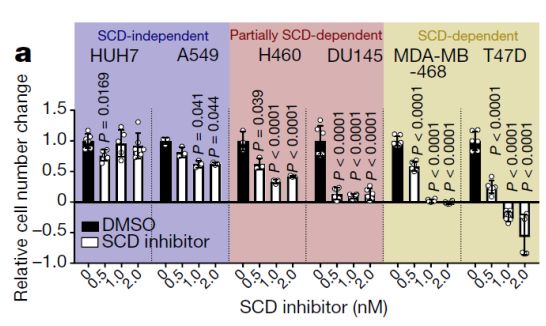
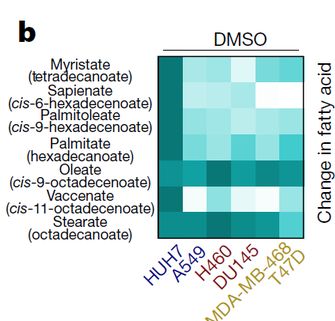
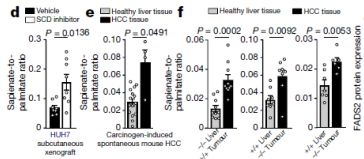
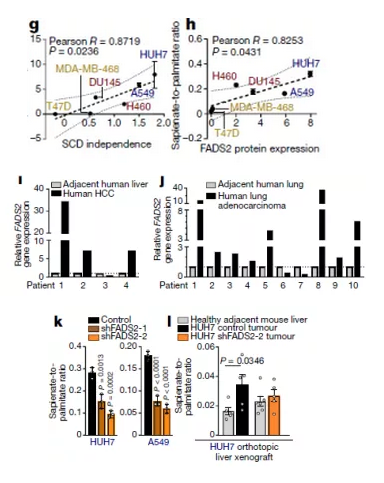
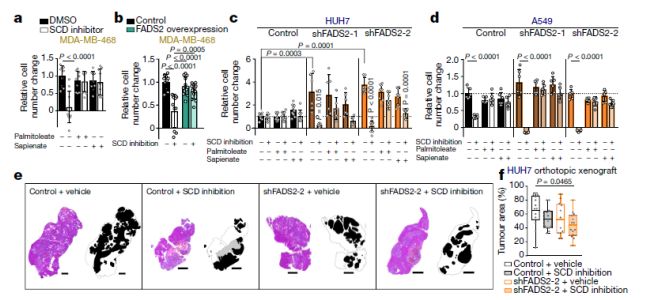



Nature is heavy: the first new discovery of plasticity of tumor lipid metabolism
 Keywords: lipid metabolism, lipid group, tumor, biomarker